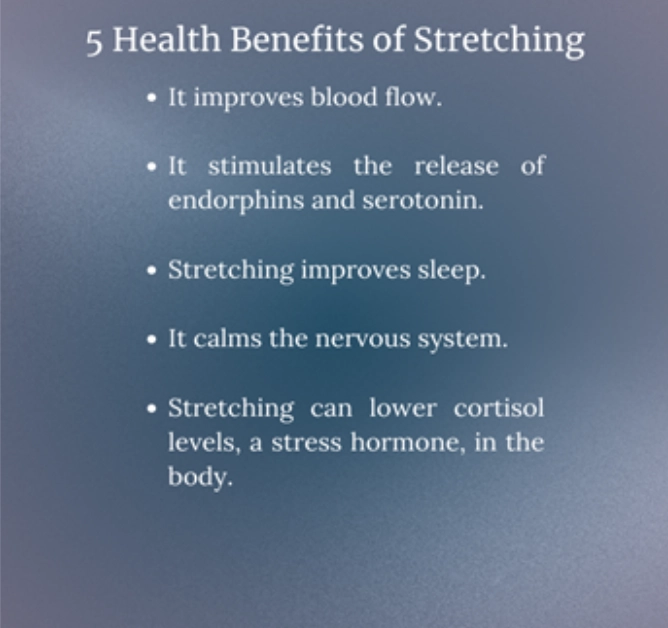How Yoga Enhances Physical Fitness
Physical fitness encompasses endurance, muscular strength, and flexibility. To stay fit and healthy, it’s important to exercise regularly. The CDC recommends that adults engage in 150 minutes of moderate-intensity exercise weekly and include strength training twice weekly. According to Hopkins Medicine, yoga can improve strength, balance, and flexibility. But can yoga be a form of exercise that can improve fitness?
Yoga, an ancient practice integrating movement and mindfulness, can reduce stress and build strength and flexibility. It includes various styles, including Iyengar, Hatha, Ashtanga, Yin, and Bikram (hot yoga), each offering unique benefits. For instance, Yin yoga has improved my spine and hip flexibility and enhanced my sleep. But is there a specific yoga style that excels in improving physical fitness?
Yoga Improves Strength In People Over 60
Physical fitness is vital for health, fall prevention, and daily activities for those aged 60 and older. A review of 12 studies on yoga’s effects in this age group found that yoga improved upper body strength, balance, mobility, and lower body flexibility in individuals aged 80 and above. Those in their sixties and seventies who practiced yoga 1-3 times a week for 9-12 weeks showed significant improvements in these areas.
The review indicated no significant gains in cardio-respiratory endurance or upper body flexibility with this duration of yoga practice. It did not identify a superior yoga style but confirmed that practicing yoga 1-3 times a week for 9-12 weeks can enhance physical fitness in older adults.
High-Intensity Yoga Improves Aerobic Fitness

Research has shown that four weeks of high-intensity cardio yoga can improve participants’ aerobic fitness compared to traditional Hatha yoga.
High-intensity interval training (HIIT), lasting from 30 seconds to three minutes with equal rest periods, increases muscle strength and endurance.
High-intensity interval training can last 30 seconds to three minutes, followed by rest periods of the same time for up to 20 to 30 minutes. It increases muscle strength and endurance. For many people with busy schedules, high-intensity interval training is very appealing because it offers a variety of health benefits in a short period.

Participants in this study improved their aerobic fitness during a twelve-session, four-week program. This program used four yoga poses performed at 1.5 seconds (high-intensity cardio yoga) and 3 seconds (traditional Hatha yoga) each for two ten-minute sessions, with a 10-minute treadmill walking recovery period at the midpoint of each 30-minute session.
So far, we have learned that yoga improves lower body flexibility, upper body strength, balance, and mobility in people over sixty. It may also be used as high-intensity interval training to improve aerobic fitness.
Can One Yoga Class a Week Enhance Physical Fitness?

Yoga has many physical benefits. This study investigated whether attending just one 90-minute hatha yoga class weekly for ten weeks would improve physical fitness. The participants were young women (18-22) who demonstrated improved balance, flexibility, and core muscle strength over the ten weeks.
This study also investigated the effects of the ten-week yoga program on body mass index, resting heart rate, heart rate variability, and body fat percentage. The researchers concluded that more intense and/or longer sessions would be needed to determine if yoga could improve these aspects of physical health.
Bridging the Gap Between Weekly Exercise and A Healthy Lifestyle
We’ve previously addressed the significance of CDC guidelines recommending 150 minutes of moderate-intensity exercise and the potential of yoga to help achieve this objective. But what about the effectiveness of yoga in improving other lifestyle health factors?
According to Hopkins Medicine, “practicing yoga may help lower blood pressure, blood cholesterol, and blood glucose levels, as well as heart rate, making it a helpful lifestyle intervention.

Yoga reduces stress and improves muscular flexibility and strength. According to this study, “Hatha Yoga is one of the varieties of yoga regarded as a practice that can help avoid cardiovascular disease.”
This review examined several studies that used varied yoga styles and session times of different lengths. It found that yoga may help minimize cardiovascular disease risk factors, including body weight, heart rate, body mass index, blood pressure, inflammation, oxidative stress, and blood glucose levels.
The Final Word
Yoga is an ancient practice that enhances physical fitness by improving strength, flexibility, and balance. Research shows that yoga benefits older adults (60+), enhancing upper body strength, lower body flexibility, and mobility. While traditional forms like Hatha yoga improve these areas, high-intensity yoga can boost aerobic fitness through short, intense sessions.
Even one 90-minute weekly Hatha yoga session for younger participants can enhance core strength, balance, and flexibility. Yoga also reduces stress and improves overall well-being, possibly lowering blood pressure, cholesterol, and blood glucose levels.
To learn more about yoga’s health benefits, Check out these resources at Yoga International and Yin Yoga.
Further Reading
- https://www.cdc.gov/physical-activity-basics/guidelines
- Effect of Functional Training on Physical Fitness Among Athletes: A Systematic Review
- 9 Benefits of Yoga | Johns Hopkins Medicine
- The Yoga-Heart Connection | Johns Hopkins Medicine
- Yoga: Methods, types, philosophy, and risks
References
Csala, B., Szemerszky, R., Körmendi, J., Köteles, F., & Boros, S. (2021). Is Weekly Frequency of Yoga Practice Sufficient? Physiological Effects of Hatha Yoga Among Healthy Novice Women. Frontiers in Public Health, 9. https://doi.org/10.3389/fpubh.2021.702793.
Kirtania, T., Biswas, S., & Goon, A. (2022). Effect of progressive yogic practices on health-related physical fitness of rural middle age women: A randomized pilot study. International Journal of Physical Education, Sports and Health. https://doi.org/10.22271/kheljournal.2022.v9.i4e.2603.
Lee, K.-H., Ju, H.-M., and Yang, W.-H. (2021). Metabolic energy contributions during
high-intensity hatha yoga and physiological comparisons between active and passive
(savasana) recovery. Front. Physiol. 12, 743859.
Park, S., & Yang, W. (2023). Applied high-intensity interval cardio yoga improves cardiometabolic fitness, energetic contributions, and metabolic flexibility in healthy adults. Frontiers in Physiology, 14. https://doi.org/10.3389/fphys.2023.1279505.
Shin, S. (2021). Meta-Analysis of the Effect of Yoga Practice on Physical Fitness in the Elderly. International Journal of Environmental Research and Public Health, 18. https://doi.org/10.3390/ijerph182111663.






